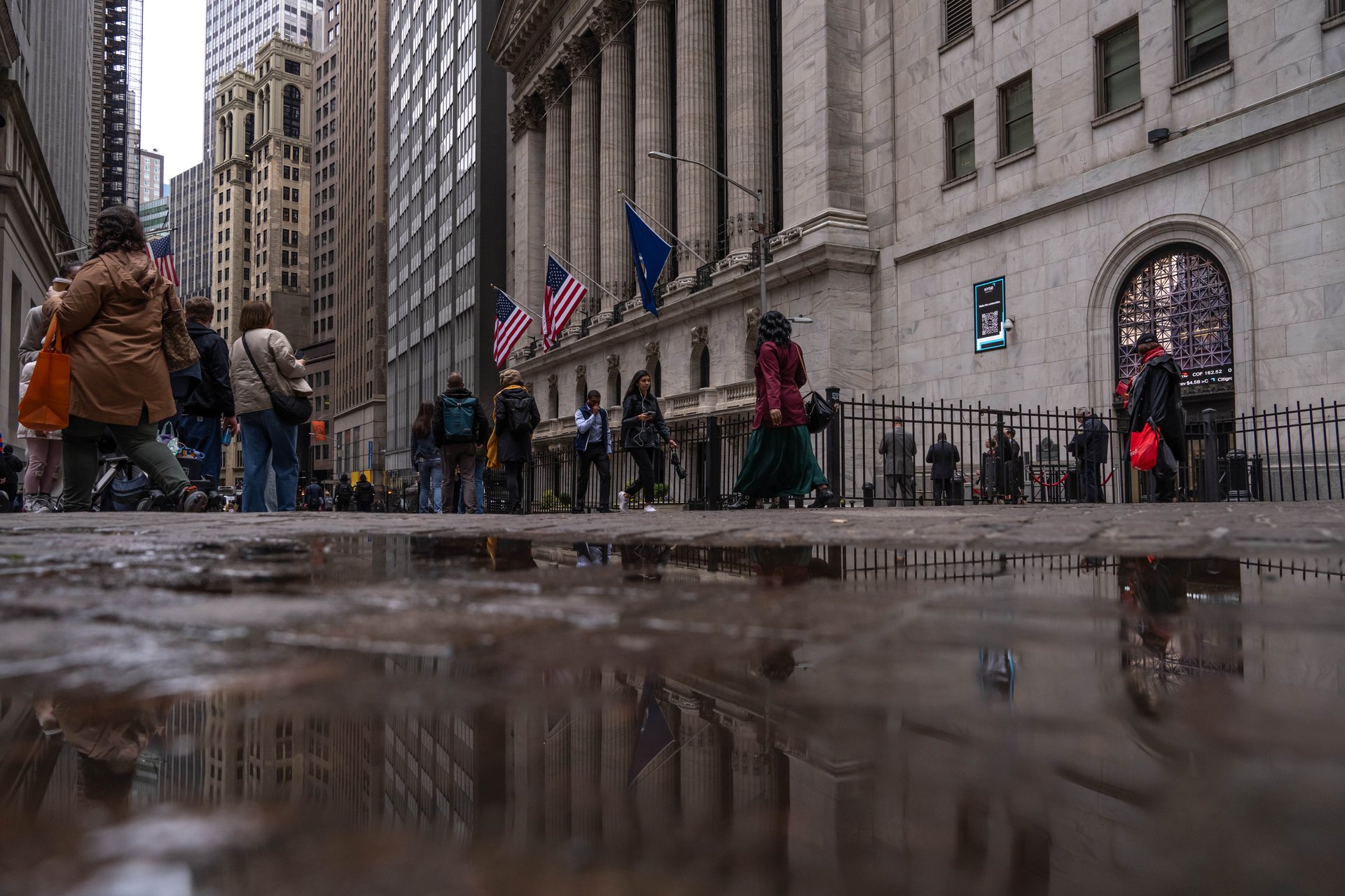The Dow drops as Nvidia stock slides again and UnitedHealth tanks — but it's not all red
Hertz soared after Bill Ackman disclosed a big stake, and Eli Lilly jumped on strong trial results for its experimental weight loss pill

The Dow sank 527 points Thursday — its worst day in weeks — after UnitedHealth reported a disappointing quarter and slashed its full-year forecast, sending shares tumbling over 20% and dragging the larger index lower.
Suggested Reading
Nvidia also stumbled, dropping 3% after reports of a U.S. clampdown on AI chip exports to China, which sent the stock down 7% on Wednesday. Thursday’s further drop pushed Nvidia’s market cap below $2.5 trillion, bringing its total loss to more than $250 billion since the tighter trade restrictions were first disclosed.
Related Content
But the day wasn’t all doom and gloom.
Hertz (HTZ) soared after Bill Ackman disclosed a big stake, and Eli Lilly (LLY) jumped on strong trial results for its experimental weight-loss pill, a potential blockbuster in the booming obesity drug space. The S&P 500 held flat, the Nasdaq dipped slightly, and small caps outperformed, with the Russell 2000 up nearly 1%.
Thursday marks the end of a big earnings week — and with markets closed for Good Friday, investors are bracing for an even heavier slate ahead. Tesla, Alphabet (GOOGL), IBM (IBM), Procter & Gamble (PG), and Boeing (BA) are all set to report next week, promising insight across just about every sector.
Uneven open signaled trouble
U.S. stocks opened unevenly Thursday as Wall Street digested fresh earnings, continuing tension over chips, and fallout from a sharp selloff the day before.
The S&P 500 ticked up 0.2%, while the Nasdaq gained 0.13% — a modest bounce after its 3% plunge on Wednesday. The Dow Jones Industrial Average, however, dropped more than 1%, pulled lower by a staggering 20% drop in UnitedHealth (UNH) stock.
The healthcare giant slashed its 2025 profit forecast and missed earnings expectations, spooking investors and weighing heavily on the price-weighted Dow.
Nvidia also remained under pressure, down more than 1% in early trading, extending losses after its $5.5 billion charge related to new chip export restrictions to China. The broader tech sector continues to grapple with geopolitical fallout, regulatory uncertainty, and earnings jitters. The Nasdaq remains down about 15% year to date.
As the Trump administration sought to blame Federal Reserve Chair Jerome Powell for tariff-related market fallout, the European Central Bank (ECB) cut interest rates again Thursday, lowering its benchmark rate to 2.25% — its seventh cut in the past year.
ECB President Christine Lagarde pointed to rising global trade tensions, particularly U.S. tariffs, as a major drag on euro-area growth. “Anybody in this room who thinks that we are in a shock-free world, would I suggest maybe raise their hands or have their head examined either way,” she said. “We are not in a shock-free world, that’s for sure.”
Earnings season heats up
Alongside UnitedHealth, Thursday’s earnings slate also included reports from Taiwan Semiconductor (TSM), Netflix (NFLX), American Express (AXP), and homebuilder D.R. Horton (DHI).
Wall Street observers leafed through a fresh round of corporate results as they continue to navigate what increasingly feels like a geopolitical storm without a forecast.
Wednesday’s sell-off signaled deeper cracks
But Wednesday’s sell-off suggests that any sense of stability or that things are business as usual is eroding. As the market moved toward close yesterday, the major indexes posted their steepest declines in weeks. The S&P 500 fell 2.2%, the Dow dropped more than 700 points, and the Nasdaq plunged over 3%. In individual names, Apple (AAPL) fell 3.9%, Tesla (TSLA) dropped nearly 5%, and Nvidia (NVDA) plunged almost 7%.
The drop came despite a stronger-than-expected March retail sales report and earnings beats from several blue-chip names, further underscoring just how much markets are being driven by abrupt policy shifts rather than fundamentals. It may all sound abstract — until you consider that Apple, Nvidia, and their peers are among the most widely held stocks in U.S. retirement funds. If you have a 401(k), odds are good you’re along for the ride.
On Wednesday, Powell reiterated the Fed’s two-part mission to foster price stability and maximum employment, warned that tariffs are likely to deliver both upward pressure on inflation and drag on growth, and suggested he would not bow to political pressure.
Blame game economics
Powell’s comments may be particularly relevant because some commentators have speculated that the market selloff may not be a bug but a feature. The theory: By putting pressure on corporate margins and stoking uncertainty, the White House was attempting to engineer the very conditions that would force the Fed to cut rates — and failing that, is now seeking to deflect blame for the economic fallout of its own policies.
Then again, attributing coherent strategy to what’s often a chaotic stream of mixed signals, offhand remarks, and rapidly shifting narratives may be a reach. Whether there’s a real plan — or just a series of improvisations with global consequences — is anyone’s guess.
